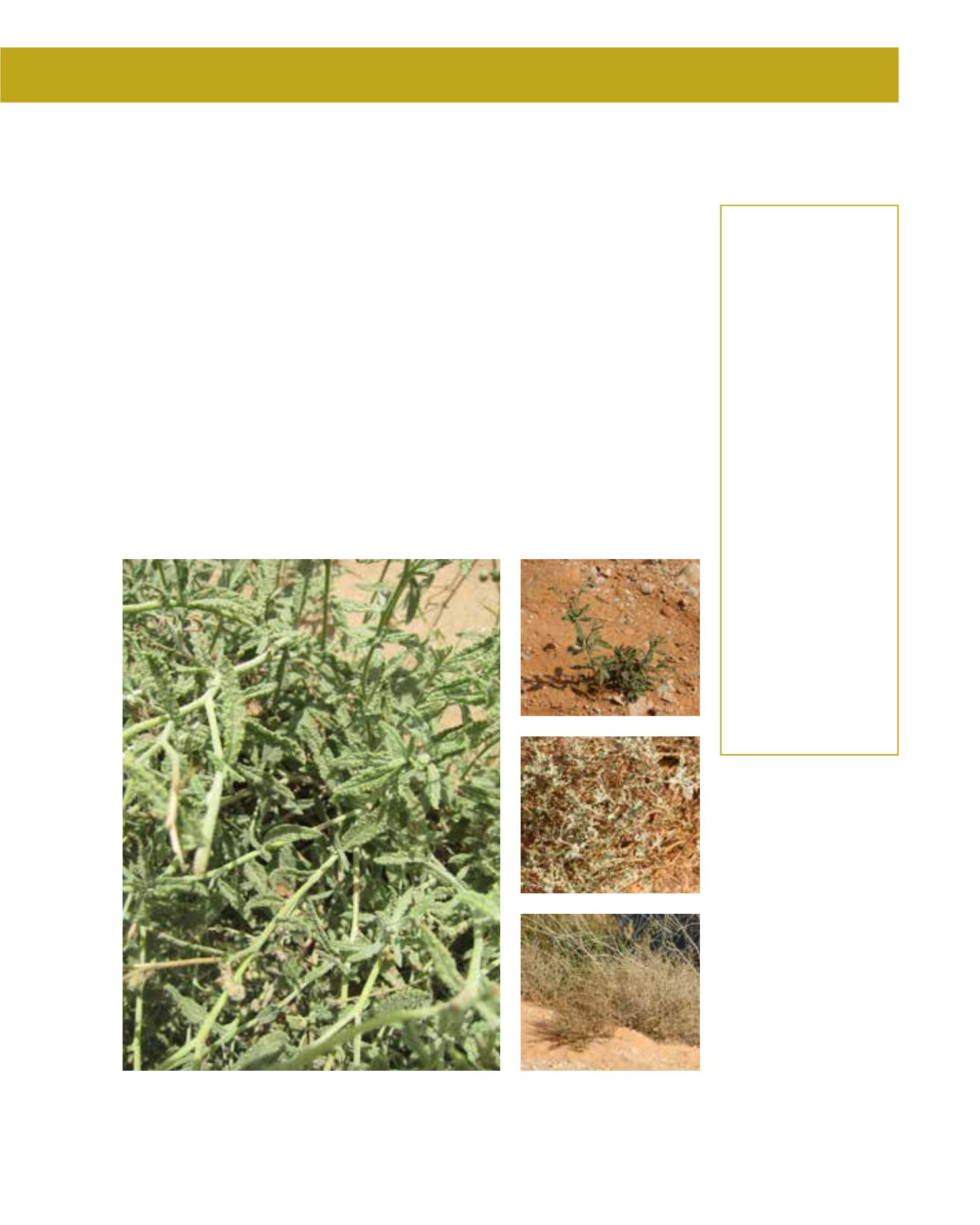

GENERAL
Origin
:
Mediterranean,
sub-tropical
Vigour
:
normal growth
rate
Humidity
:
extremely arid,
very arid, semi-
arid
Propagation :
direct sowing,
sowing and
pricking out
Maintenance :
low
CONDITIONS
Urban climate :
vulnerable
Dessication :
resistant
Stagnant water :
resistant
Irrigation
:
low
Salinity/ppm :
high (5000 ppm)
Hardiness
:
-6°C
SHAPE
Type
:
perennial,
sub-shrub
Height
:
0.5 m
Spread
:
0.8 m
Foliage
:
evergreen
FLOWER
Colour
:
white
Size
:
0.3 cm
Period
:
March - April
FRUIT
Type of fruit :
nutlet
Fruit size
:
0.2 cm
This woody shrub, called rumram in Arabic, is common on sand and limestone in the Arriyadh
region, and is well known for its medicinal properties for healing mouth and skin infections and
curing snake bites. Widespread, it is found in sandy wadis, rocky terrain and on poor pasture
ground. A perennial up to 50 cm high with many white, bristly stems from a woody base, the
small, linear leaves are grey-green. The flowers are white with a yellow centre growing in a zigzag
fashion down one side of the stem. Deep-rooting, it is very tolerant of saline conditions. The plant
is extremely tolerant of drought, wind and hot sun. It attracts many insects and is the food plant
for moth caterpillars. Propagation is by seed. H. crispum is a useful plant for landscape purposes
as a low ground cover. It must be noted, however, that some maintenance is necessary, since the
plant becomes untidy over time: watering in summer will improve its foliage and appearance.
160
Heliotropium crispum,
Boraginaceae
Heliotrope,
rumram
















